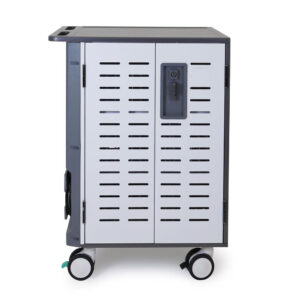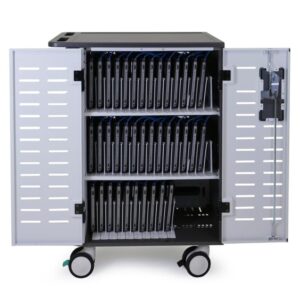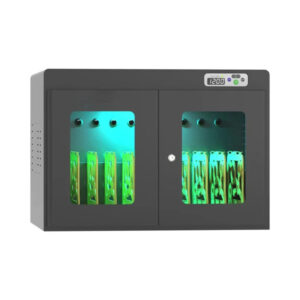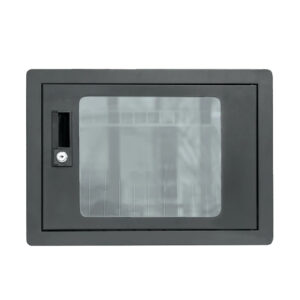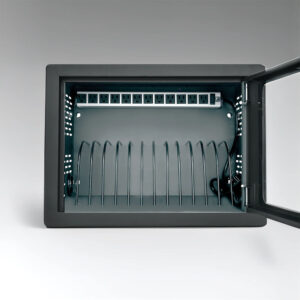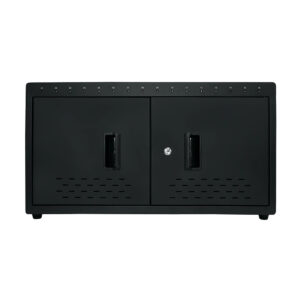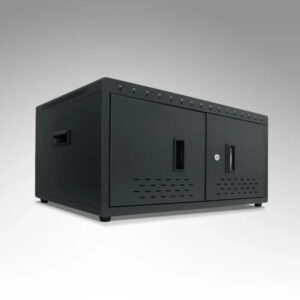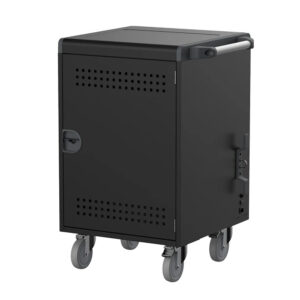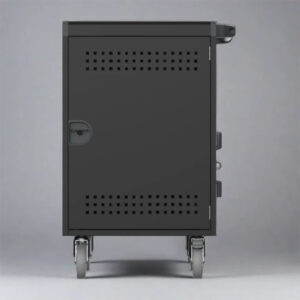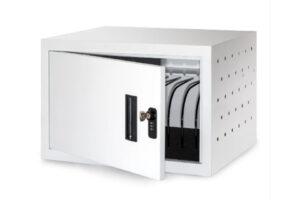Summary
A charging cabinet is a specialized storage unit designed to securely charge and manage multiple electronic devices, including laptops, tablets, and smartphones. Increasingly utilized in educational institutions, corporate offices, healthcare facilities, and public spaces, charging cabinets facilitate the organized storage and efficient charging of devices while addressing safety and security concerns. Their notable functionality and versatility stem from customizable options and advanced features, such as smart charging technology and built-in security mechanisms, making them essential for environments that rely heavily on technology for operational efficiency.
The growing dependence on electronic devices in various sectors has heightened the importance of charging cabinets. These units not only streamline device management but also enhance the longevity and reliability of valuable assets by providing protective features such as surge protection and temperature control. As schools and organizations increasingly adopt digital tools for learning and productivity, the demand for effective charging solutions continues to rise, underscoring the relevance of charging cabinets in contemporary settings.
While charging cabinets present several advantages, including improved organization and reduced risk of theft, they are not without limitations. Potential drawbacks include significant upfront costs, installation complexity, and compatibility concerns with diverse devices. Furthermore, while many models offer robust security features, concerns regarding theft or vandalism remain pertinent in high-traffic areas. It is crucial for potential buyers to carefully evaluate these aspects to ensure that the chosen solution aligns with their specific operational needs and security requirements.
In summary, charging cabinets serve as vital tools for managing the increasing volume of electronic devices in various environments. Their combination of security, organization, and advanced charging capabilities positions them as a necessary investment for institutions and businesses aiming to maximize technology utilization while maintaining safety and efficiency.
Table of Contents
Types of Charging Cabinets
Charging cabinets come in various designs and configurations to meet the diverse needs of users across different environments, particularly in educational institutions, corporate offices, and healthcare facilities. These cabinets can be categorized based on their charging mechanisms, size, and additional features.
Charging Mechanisms
AC Charging Cabinets
AC charging cabinets are equipped with multiple power supply panels that allow users to plug in devices via their respective adapters. This type of cabinet is straightforward and effective for a wide range of devices, such as laptops and tablets, requiring traditional AC power sources.
DC Charging Cabinets
In contrast, DC charging cabinets feature integrated switching power supplies and USB hubs. Users can directly connect their devices to USB ports within the cabinet, providing a more streamlined charging process. These cabinets tend to be more expensive than AC cabinets due to their advanced technology.
Size and Capacity
Charging cabinets are available in various sizes to accommodate different quantities of devices. Popular configurations include options that can charge anywhere from 10 to 60 devices simultaneously, depending on user requirements. Institutions can choose smaller cabinets for individual classrooms or larger units for entire schools.
Customizable Features
Many charging cabinets offer customizable options to meet specific user needs. Some models include additional functionalities such as smart charging technology, which automatically stops charging when devices are full to conserve energy. Others may feature Wi-Fi syncing for real-time monitoring of charging status or device diagnostics, enhancing the overall user experience.
Mobility and Security
Certain charging cabinets, such as the Kendall Howard Wall Mount Charging Station, are designed for mobility, featuring silent universal wheels for easy transport. Additionally, many cabinets come equipped with locking mechanisms to safeguard devices from unauthorized access, making them suitable for use in schools, offices, and public spaces.
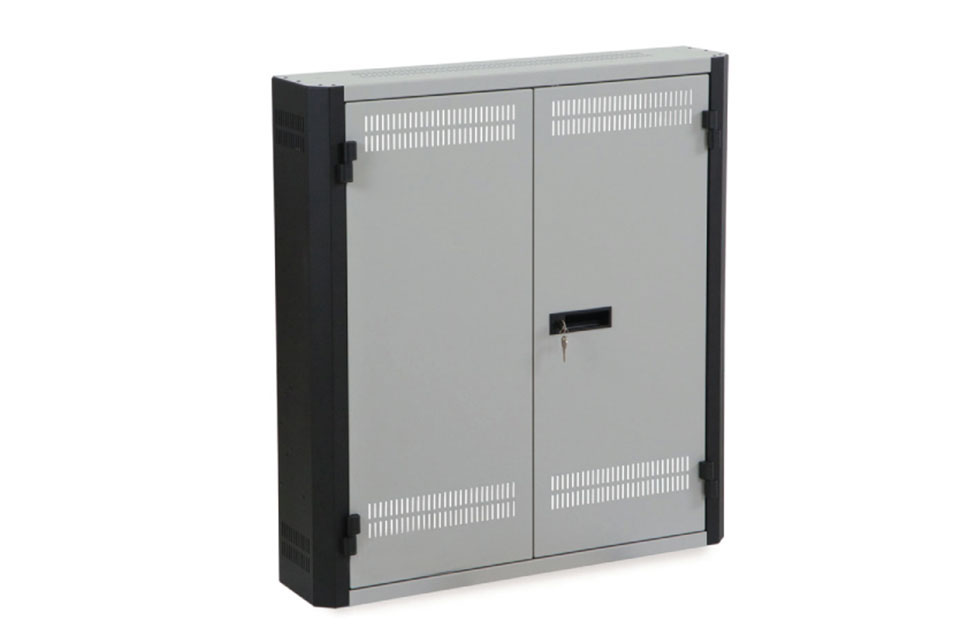
Benefits of Using a Charging Cabinet
Charging cabinets offer numerous advantages, particularly for educational institutions and environments where multiple electronic devices are utilized. These secure storage units are designed not only for charging but also for effective device management and enhanced safety.
Efficient Device Management
Charging cabinets centralize the storage of electronic devices, making it easy to distribute and collect them as needed. This efficiency is crucial in educational settings where multiple devices, such as laptops and tablets, are used daily. The cabinets often include lockable doors and tamper-proof locks, which significantly deter theft and unauthorized access, thereby ensuring the security of valuable assets. Furthermore, controlled access allows only authorized personnel to manage the devices, promoting accountability and minimizing the risk of loss.
Improved Device Longevity
The design of charging cabinets includes features that contribute to the longevity of electronic devices. For instance, they often have surge protection to prevent damage from electrical spikes and temperature control to guard against overheating. By ensuring devices are stored and charged correctly, institutions can reduce maintenance costs and extend the life of their technology assets.
Eco-Friendly Charging
Modern charging cabinets are increasingly designed with energy-efficient technologies, such as smart charging systems that cease charging once devices are fully powered. This feature not only minimizes energy waste but also supports eco-friendly initiatives in educational institutions, contributing to a more sustainable environment.
Customizable Options
Charging cabinets come in various sizes and configurations, allowing institutions to select options that best meet their specific needs. Whether requiring a small unit for a single classroom or a larger one for an entire school, these cabinets are scalable and customizable. Some models even offer additional functionalities, such as Wi-Fi syncing and device diagnostics, catering to a diverse range of educational environments.
Enhanced Safety and Organization
In addition to their functional benefits, charging cabinets also enhance safety in environments with multiple electronic devices. By organizing devices in one secure location, they help maintain a tidy space and manage cables effectively, reducing the risk of tripping hazards. Features such as adequate airflow for heat dissipation and proper ventilation ensure devices operate safely, preventing overheating and potential damage.
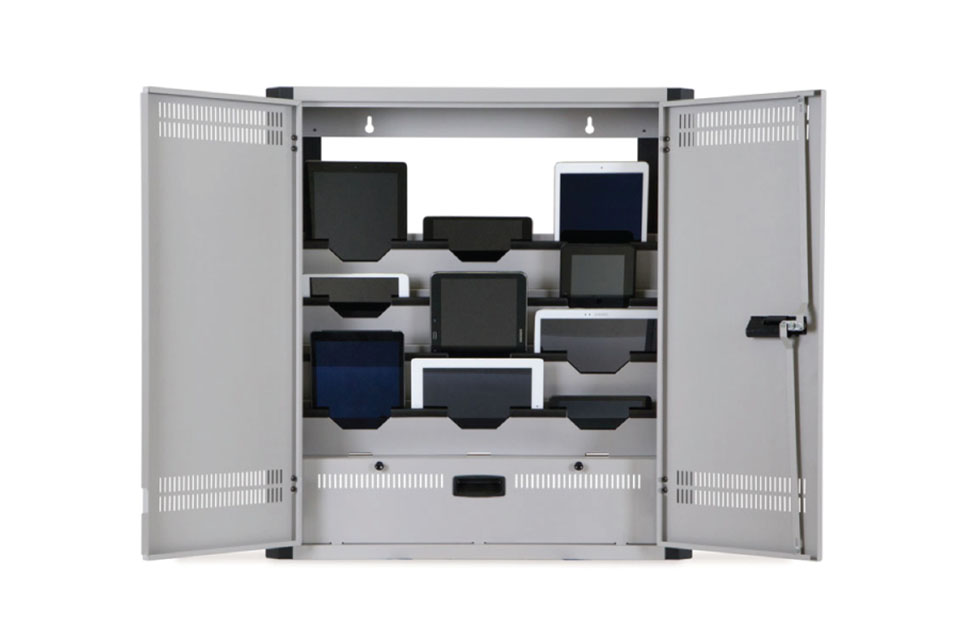
Key Features to Consider
When evaluating charging cabinets, several critical features can enhance both functionality and user experience. These features are essential for ensuring safe, efficient, and organized charging of multiple devices.
Security Features
Security is another paramount concern when selecting a charging cabinet. Features like lockable compartments protect devices from theft and unauthorized access, giving users peace of mind. An ultra-secure design allows for the safe storage of devices while they charge, using padlocks and keys to safeguard valuable equipment.
Universal Compatibility
A charging cabinet should offer universal, multi-device compatibility, enabling users to charge a wide range of devices, including those with protective cases. For instance, some cabinets can charge up to 32 devices simultaneously, accommodating various brands and models without compatibility issues.
Safe Power Management
Safe power management is crucial in preventing overcharging and prolonging device longevity. Advanced charging stations, such as those utilizing ECO Safe Charge™ technology, can manage power requirements by staging the availability of power, ensuring that devices are charged efficiently without the risk of damage.
Affordability and Longevity
Long-term affordability should be considered when choosing a charging cabinet. Investing in a durable mobile device charging station can lead to significant cost savings over time, as these products are built to withstand frequent use and maintain efficiency.
Removable Dividers
Removable steel dividers in charging cabinets provide flexibility in organizing devices. This feature allows users to adjust the interior layout based on their specific needs, accommodating devices of various sizes and shapes.
Smart Energy Management
In modern charging solutions, smart energy management is increasingly important. This feature allows for monitoring and adjusting energy consumption based on user needs and operational requirements. It helps optimize charging schedules to avoid peak energy costs, thereby enhancing overall efficiency.
Additional Design Considerations
When selecting a charging cabinet, consider design elements such as cord management and accessibility. Features like adequate cord lengths and thoughtful drawer dimensions can enhance the user experience by minimizing clutter and ensuring easy access to devices during charging.
Incorporating these key features into your charging cabinet can greatly enhance the overall charging experience, making it efficient, secure, and user-friendly.
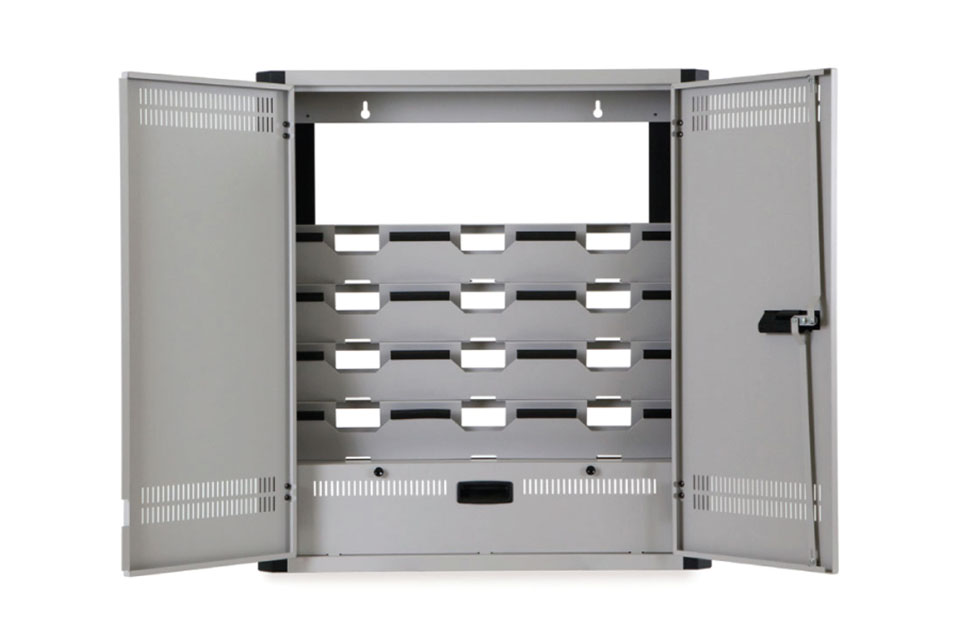
Applications of Charging Cabinets
Charging cabinets are versatile storage solutions that serve a wide range of applications across various sectors. Primarily designed for educational institutions, these cabinets play a crucial role in the efficient management of electronic devices, but their benefits extend beyond just schools.
Educational Institutions
In educational settings, charging cabinets facilitate the organized storage and charging of devices such as tablets, laptops, and smartphones. They provide a centralized location for storing devices, making it easier for teachers to distribute and collect them. The built-in power management systems and safety features, such as surge protection and overheating safeguards, ensure that devices are charged efficiently and securely. With the growing reliance on technology for enhanced learning experiences, charging cabinets have become indispensable in modern classrooms.
Corporate Offices
In corporate settings, charging cabinets serve as a practical solution for managing the charging needs of multiple mobile devices used by employees. By keeping devices organized and charged, companies can enhance productivity and streamline operations. Features like individual device compartments and integrated power management also contribute to a neat and efficient workspace.
Public Spaces
Charging cabinets are increasingly found in public spaces, including libraries, airports, and community centers. These units offer users a convenient way to charge their devices while on the go, supporting a growing demand for accessible power sources in everyday life. The sturdy construction of charging cabinets ensures that they withstand heavy usage and adverse environmental conditions, making them ideal for such locations.
Healthcare Facilities
Charging cabinets are also increasingly used in healthcare environments, where they provide secure storage and reliable charging for medical devices and tablets used by healthcare professionals. These cabinets help ensure that devices are readily available and operational, thereby improving patient care and workflow efficiency. The robust locking mechanisms and tamper-resistant designs of these cabinets protect sensitive equipment from theft and damage.
Digital Libraries and Learning Centers
Charging racks and cabinets specifically designed for digital libraries and learning centers facilitate the management of student devices. These units help prevent device mismanagement and ensure that devices are always accessible and charged, allowing for uninterrupted access to digital learning resources. By centralizing device storage, charging cabinets support effective teaching and learning methodologies.
Considerations Before Purchase
When contemplating the acquisition of a charging cabinet, several critical factors should be considered to ensure that the investment aligns with both business needs and user expectations.
Cost and Financial Incentives
The initial financial outlay for a charging cabinet can be substantial. It is essential to evaluate all associated costs, including installation, which encompasses materials and labor fees, as well as permitting expenses. While the upfront costs may seem high, understanding the potential return on investment (ROI) is crucial. Many charging cabinets are designed with energy efficiency in mind, which can lead to reduced utility bills and overall cost savings over time through optimized charging cycles.
User Experience and Payment Options
User experience is paramount in the effectiveness of charging cabinets. Offering multiple payment options—such as mobile apps, RFID cards, and tap-to-pay functionality—can enhance customer satisfaction and streamline the charging process. Additionally, deciding on a pricing model (e.g., free charging, per-session fees, or subscription services) can impact user engagement and overall satisfaction with the service.
Safety and Compliance
Ensuring that the charging cabinet meets all relevant safety standards and regulations is critical. Compliance not only protects customers but also enhances the brand’s reputation. Therefore, consider investing in products that have been tested and certified for safety.
Warranty and Customer Support
A comprehensive warranty can provide added peace of mind regarding the longevity and maintenance of the charging cabinet. When selecting a vendor, look for those who offer responsive customer support to address any issues that may arise after installation.
Environmental Considerations
Sustainability is an increasingly important factor in purchasing decisions. Regulations aimed at reducing e-waste, such as those implemented by the European Union, emphasize the importance of reducing the production of electronic chargers, which aligns with the principles of sustainability: reduce, reuse, and recycle. Choosing charging cabinets that adhere to these guidelines not only contributes to environmental responsibility but can also yield long-term cost benefits and compliance with regulations.
By carefully evaluating these considerations, businesses can make informed decisions that enhance operational efficiency and meet the needs of their users.
Potential Drawbacks and Limitations
While charging cabinets offer various advantages, several potential drawbacks and limitations should be considered before implementation.
Cost Implications
One of the primary concerns associated with charging cabinets is the cost. The initial investment for high-quality charging solutions can be substantial, particularly for advanced features such as overload and overheating protection. As technology continues to advance and economies of scale develop, these costs may decrease over time. Nevertheless, the upfront financial commitment may deter some users.
Complexity of Installation
The installation of charging cabinets can be complex, requiring adherence to specific safety standards and electrical codes. For example, Level 2 chargers necessitate the use of dedicated GFCI breakers to prevent electrical hazards. Additionally, improper installation can lead to safety issues, such as electric shock risks or damage to the receptacle from frequent plugging and unplugging.
Maintenance Requirements
Charging cabinets often require regular maintenance to ensure optimal performance and safety. Overheating, for instance, can be a significant issue, particularly in high-power cabinets or during prolonged use. Ensuring proper ventilation and cooling systems is essential, and any persistent overheating may necessitate professional inspection and repairs.
Compatibility Concerns
Another limitation lies in compatibility with various devices. Charging cabinets may not support all types of devices or charging standards, which could restrict their usefulness in environments with diverse technology requirements. Users must ensure that the cabinet’s specifications align with the devices intended for charging.
Charging Efficiency Variability
Charging efficiency can also be influenced by various factors such as temperature and charging rates. For instance, studies have shown that charging efficiency decreases significantly in extreme temperatures, dropping below 40% in extremely cold conditions. This variability can affect overall performance, particularly in climates with harsh weather conditions.
Security Considerations
While charging cabinets can provide some security features, such as lockable doors to prevent unauthorized access, they are not immune to potential theft or vandalism. Users must weigh the benefits of security features against the risks inherent in their specific environment.



